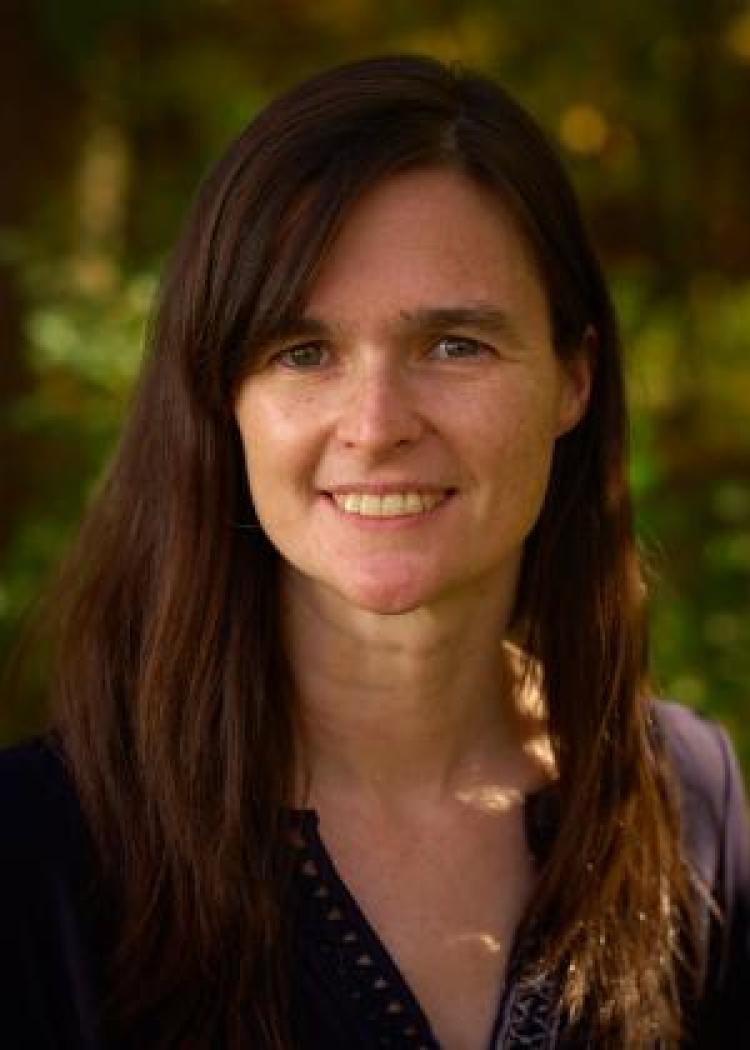For better health, urbanites find help from trees
City trees benefit human health more than grass, CU Boulder research finds
The growing body of research establishing that “green space” benefits human health and wellbeing, both physical and mental, will come as no surprise to anyone who finds solace in hiking in the mountains, strolling through meadows or even snoozing in the shade of a tree.
Thus far, living or working near green space has been found to decrease mortality, improve mental health and reduce low birth weights, among other benefits, making new research from the University of Colorado Boulder, the first of its kind, striking.

Colleen Reid
Colleen Reid, assistant professor of geography at the University of Colorado Boulder, knows a little about green space. She grew up in a “leafy, green” suburb of Boston and spent summers hiking the rugged White Mountains of New Hampshire. Once she came west, she fell in love with the deserts of Arizona, the Sierra Nevada of California and the Rocky Mountains.
And as a researcher, she has focused on how environmental and social factors interact to influence human health. Green space is good for us, sure, but she wanted to better understand how different kinds of green space might affect wellbeing.
“We wanted to know, is having trees better than having larger areas with more grass and bushes,” she says.
The answer, at least in the Big Apple, may be yes.
“My study found that living in proximity to more trees is a bit more beneficial to health than living in proximity to grass,” Reid says.
In “Is All Urban Green Space the Same? A Comparison of the Health Benefits of Trees and Grass in New York City,” published in the October issue of the International Journal of Environmental Research and Public Health, Reid and colleagues from Drexel University, the University of Pittsburgh and Harvard University found that trees are more correlated with reports of “good” or “excellent” health than grassy areas.
The researchers also found that trees are associated with better health among urban denizens of both low and high socioeconomic status; for grass, there were benefits to those of high socioeconomic status, but not low. And in general, lower income urban neighborhoods often have fewer trees.
The research focused on New York City because it had developed “really great spatial data that can identify what every three-meter pixel is covered by,” Reid says. Most other studies rely on satellite imagery to identify green space in urban areas, but the resolution isn’t high enough to differentiate between grassy areas and trees
This study is the first to compare the associations for trees versus grass with self-reported health in an urban setting.
Trees may be more likely than grass to provide shade or reduce noise pollution. Trees also release terpenes, many of which demonstrate anti-inflammatory, anti-tumorigenic, and neuroprotective effects in toxicological studies.
“It needs to be studied in other places, but for a preliminary finding, I thought it was pretty interesting,” Reid says. “We hope to be able to look at other cities.”
The mechanism for the association remains a mystery, though Reid and her colleagues have pondered various explanations.
“Trees, for example, may be more likely than grass to provide shade or reduce noise pollution. Trees also release terpenes, many of which demonstrate anti-inflammatory, anti-tumorigenic, and neuroprotective effects in toxicological studies,” the authors write. “Trees have also been shown to be associated with other benefits such as reduced crime, which may be related to psychological pathways to health.”
If confirmed by further research, the findings suggest that cities could improve public health by planting trees, “a relatively affordable and simple solution.”
“These health benefits would be in addition to the numerous environmental benefits of urban tree planting related to mitigating, through sequestering carbon dioxide and reducing the need to cool buildings, and adapting to, through reducing the urban heat island effect, climate change,” the authors write.

